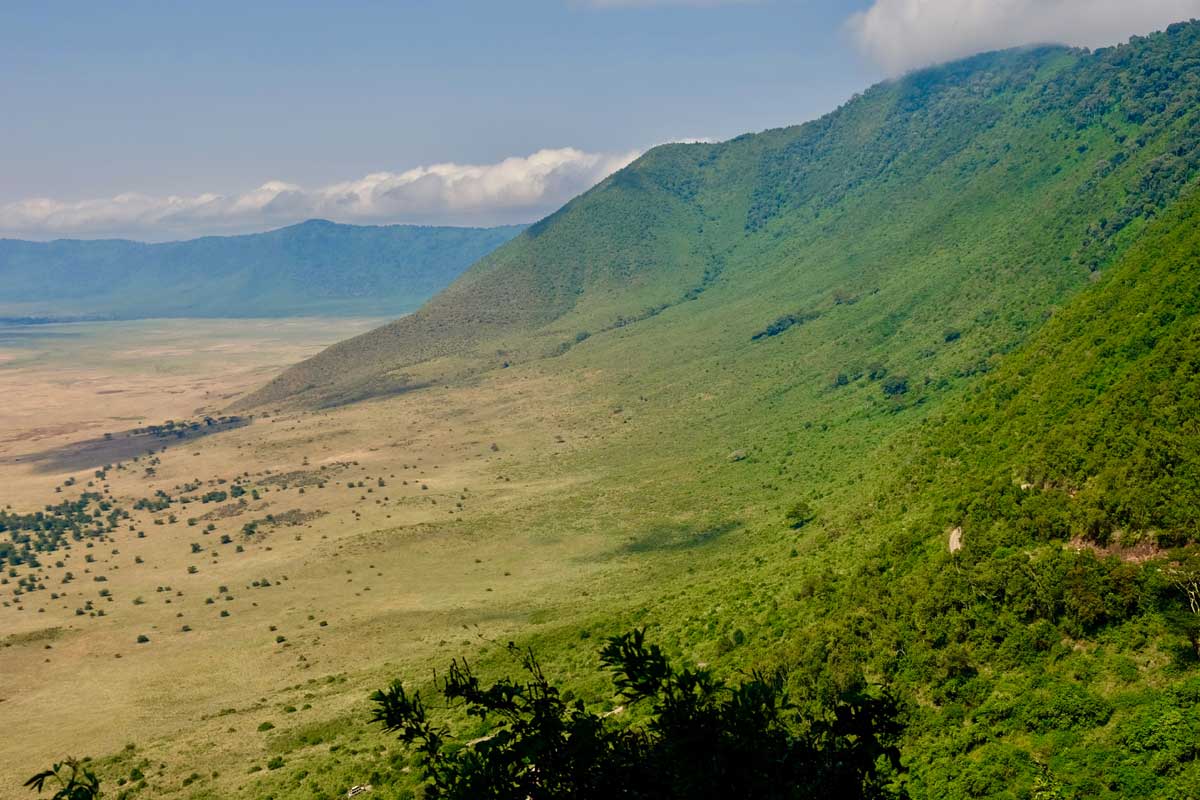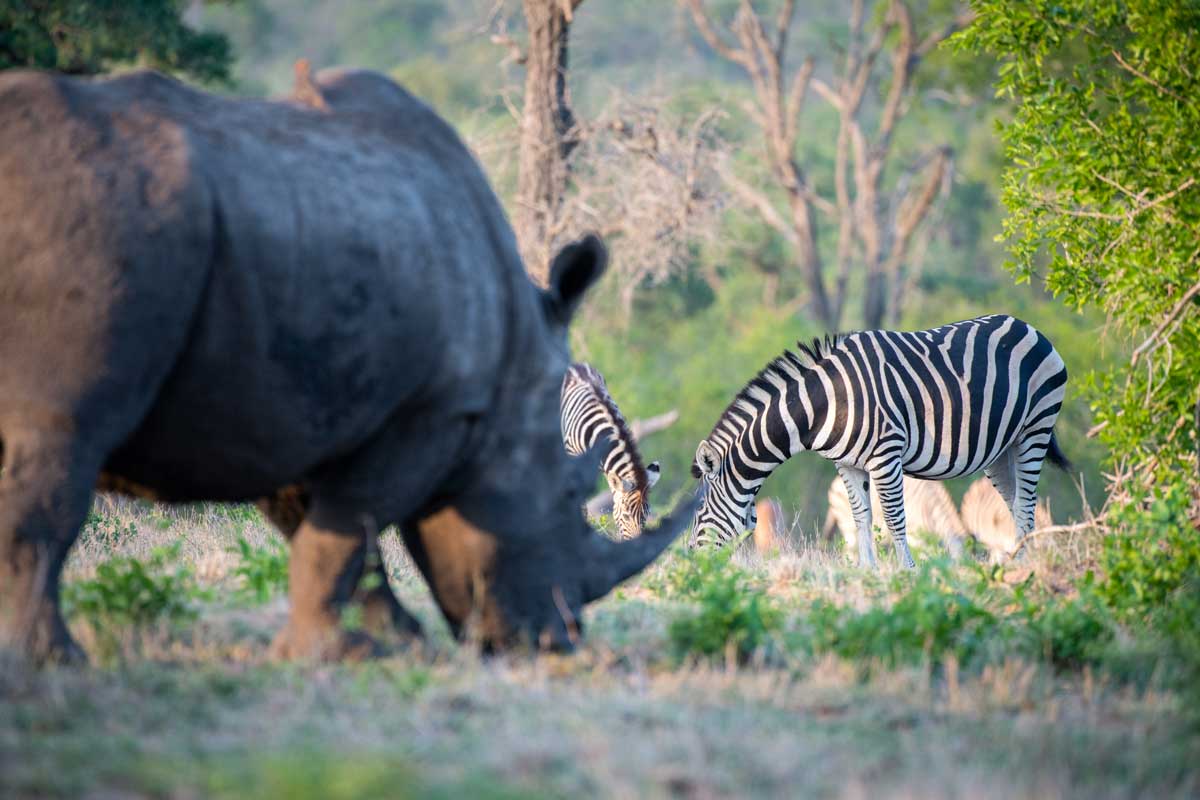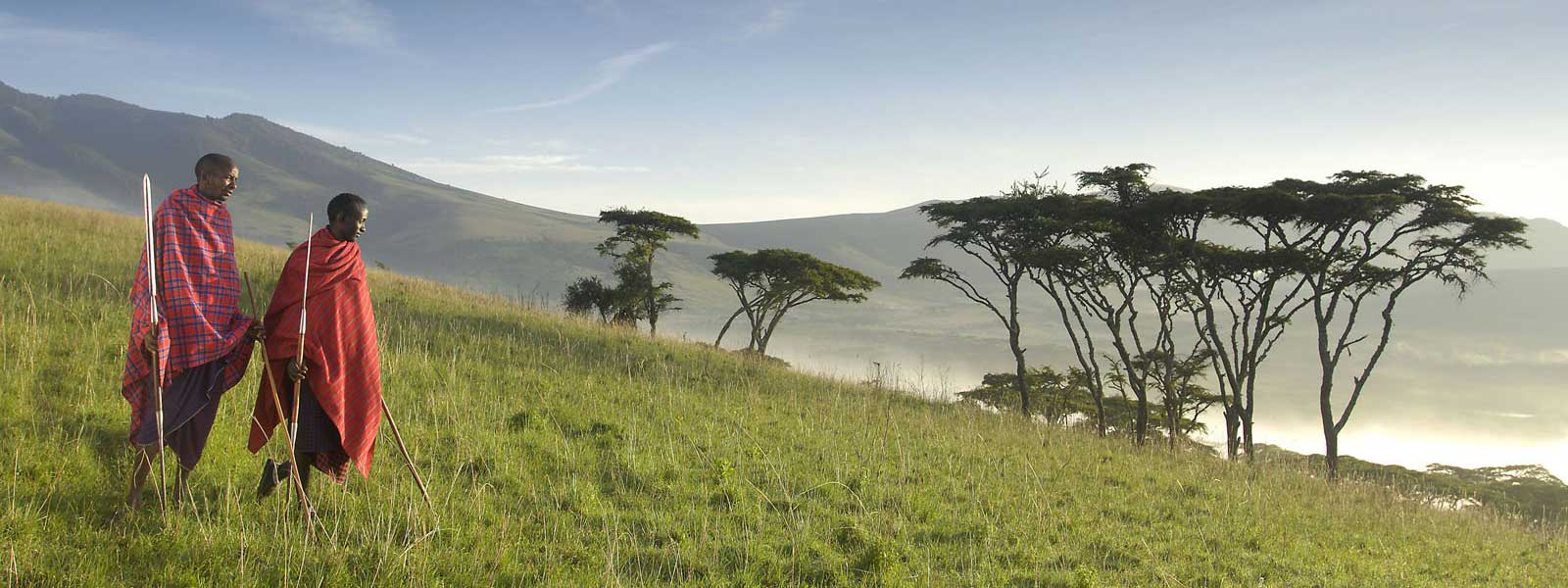Ngorongoro Conservation Area, Tanzania
The Ngorongoro Conservation Area (NCA) in northern Tanzania is home to one of the most spectacular safari experiences on the continent. Part of the Serengeti ecosystem – definitely one of Tanzania’s must-see places – the landscape of this 829,200-hectare UNESCO World Heritage Site ranges from short-grass plains, grazed by dazzles of zebra and large herds of wildebeest, to placid crater lakes and volcanic peaks wreathed in cloud. The famous Ngorongoro Crater — one of the new Seven Natural Wonders of Africa and the feature from which the NCA takes its name — is the world’s largest inactive and empty volcanic caldera, formed 2 to 3 million years ago. Around 25,000 large animals live in the 30,000-hectare crater, including lion, black rhino, elephant, and giraffe. Spend a day on safari in the crater, pausing for a special lunch in the bush. Visitors can also hike up the Olmoti volcano, trek down to the Empakaai Crater lake (where pink flamingos flock in the shallows) or visit a Ngorongoro village to learn about Maasai culture.


Any Northern Tanzania Safari should ideally include a visit to Ngorongoro Crater: it is one of the most beautiful natural wildlife safari sites in the world and an exceptional place to interact with people from the Maasai tribe.
The Ngorongoro Crater and surrounding highlands together form one of Africa’s most beautiful regions. Volcanic craters form stunning backdrops to some of the most fertile and richest grazing grounds in Africa. The most famous such crater is without question Ngorongoro, the world’s largest intact volcanic caldera and home to the highest density of big game in Africa. Ngorongoro is justifiably one of the continent’s most famous safari destinations.
How to get to the Ngorongoro Crater | Arusha to Ngorongoro
- Driving from Arusha. Depending on your party size, it may be cheaper for you to all share a private vehicle and guide from when you are picked up from your international flight at Kilimanjaro Airport all the way until you fly out of the Ngorongoro region. If you are driving, it is essential to have a night on either side of your crater descent either in a camp on the crater rim, or a 20-minute drive away in the Ngorongoro Highlands. This means you can get to the gates early to avoid the crowds!
Ngorongoro Crater Weather – When to go
Since the wildlife mainly stays in the crater all year round, there is really no good or bad time to visit. However given that the crater floor does get busy with vehicles, it can be more pleasant to visit during the low season. Higher water levels in Lake Magadi (in the center of the Crater) also result in higher concentrations of flamingos. Whenever you visit Ngorongoro, you are guaranteed excellent safari action. The beauty of a Ngorongoro safari is because of its unique micro-climate, it can be enjoyed year-round.
How did the Ngorongoro Crater form?
Now classed as a UNESCO World Heritage Site, the Ngorongoro Crater was formed when a giant volcano exploded and collapsed around 3 million years ago. The cone of the volcanic caldera collapsed inwards and created what we know today as one of the most unique safari parks in Africa, and indeed the world. A one of a kind safari destination teeming with life. For further facts and explanations of the Ngorongoro Crater please follow the link to our blog post.
Now Ngorongoro is a notoriously difficult destination to work out logistics for, but from 20 years of experience organizing such trips, we can guide you in the right direction – so give us a call to discuss your different options.
Scroll down for everything you need to know about a Ngorongoro Crater safari.



